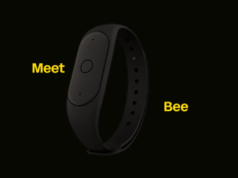Hewlett Packard Enterprise (HPE) introduced several new tools this week to help enterprises lower the cost of deploying and managing their Internet of Things (IoT) networks. The company said the new products will help companies better integrate IoT into their mainstream operations, particularly organizations that need to manage IoT devices across a large scale.
“Cost-prohibitive economics and the lack of a holistic solution are key barriers for mass adoption of IoT,” said Keerti Melkote, senior vice president and general manager, Hewlett Packard Enterprise, in a statement. “By approaching IoT with innovations to expand our comprehensive framework built on edge infrastructure solutions, software platforms and technology ecosystem partners, HPE is addressing the cost, complexity and security concerns of organizations looking to enable a new class of services that will transform workplace and operational experiences.”
Cutting Deployment and Management Costs
The new tools, introduced at the company’s Discover London event, include solutions geared toward wide area, industrial, and enterprise ![]() IoT deployments. Among them is a new Mobile Virtual Network Enabler, designed to give customers greater control over IoT devices that need cellular connectivity and services.
IoT deployments. Among them is a new Mobile Virtual Network Enabler, designed to give customers greater control over IoT devices that need cellular connectivity and services.
HPE said the service will foster the emergence of specialized IoT mobile virtual network operators (MVNOs) that resell IoT connectivity directly to customers at prices optimized for large scale machine-to-machine (M2M) and IoT deployments by reducing provisioning costs by up to 80 percent.
By reducing IoT connectivity costs and translating device communications to a common language, the company said the new tools will help dramatically change the economics and viability of large scale IoT deployments.
HPE also launched its Universal IoT Platform at the same event. Designed for massive scale, multi-vendor, and multi-network support using the oneM2M interoperability standard, the Universal IoT Platform manages MVNE devices and provides multi-vendor IoT monitoring, reporting, and analytics services with the same reliability and scale provided by carriers, the company said. The platform supports long-range, low-power connectivity deployments such as LoRa and SIGFOX, as well as devices that use cellular, radio, Wi-Fi and Bluetooth.
Improved Support and Management Tools
Other enterprise IoT enhancements announced this week by HPE include support for new lightweight M2M standards, which will provide plug-and-play interoperability between its Universal IoT platform and IoT devices. The company also announced the expansion of device management capabilities that will allow companies to manage both SIM and non-SIM devices across different systems and applications. HPE is also increasing support for LoRa gateways, with a common set of applications to simplify device provisioning and control in heterogeneous LoRa environments.
Meanwhile, HPE’s Aruba subsidiary announced two new switches designed to deliver visibility and secure connectivity for large scale IoT deployments at the enterprise network edge. The Aruba ClearPass Universal Profiler and the Aruba 2540 Series Switches will identify and inventory all IoT devices as they connect to the network, driving down the per-port cost of wired IoT connectivity.
“It is challenging to cobble together solutions from multiple vendors to interconnect and manage different IoT devices and systems,” said Zeus Kerravala, principal analyst, ZK Research, in HPE’s statement. “This force fitting of solutions results in huge infrastructure and operations expenses and dramatically delays organizations’ introduction of IoT solutions. The new solutions HPE is delivering to address the barriers to IoT adoption can significantly shorten deployment times and simplify the network architecture which will also improve security.”






